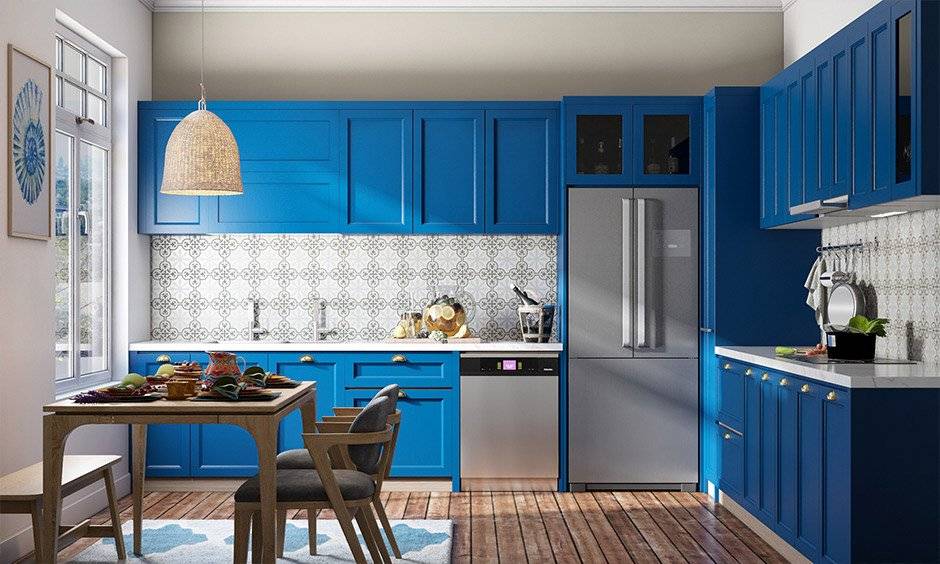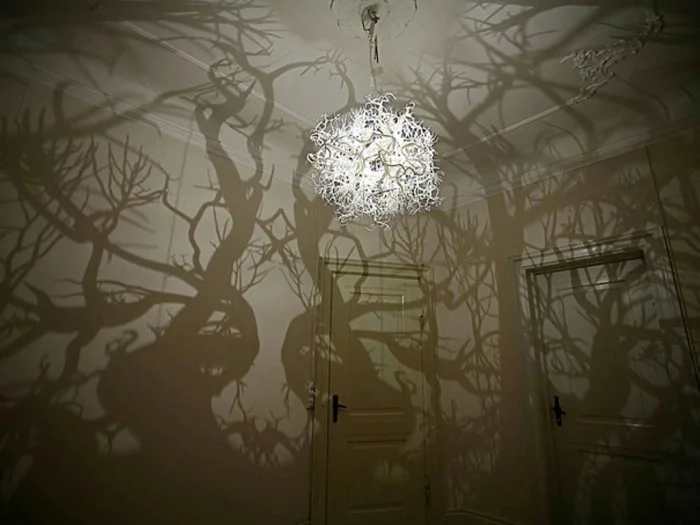
Top 7 Kitchen Designs for 2025 – Modern Home Inspiration
The kitchen is often considered the heart of the home, and as we move into 2025, innovative design trends are emerging that reflect a blend of functionality and style. Modern kitchens are evolving, embracing sustainability, technology, and personalized aesthetics.
In this article, we will explore the top seven kitchen designs for 2025, offering insights into the latest trends that will not only enhance the kitchen space but also transform the way we interact with it.
1. Sustainable Kitchen Materials: The Future of Eco-Friendly Design
Why Sustainability is a Key Trend in 2025
Sustainability is becoming a pivotal element in kitchen design trends for 2025, driven by increased environmental awareness among homeowners. Modern kitchens are expected to utilize materials that not only meet aesthetic expectations but also prioritize eco-friendly practices.
This shift towards sustainable kitchen design is not just a fleeting trend; it represents a commitment to creating healthier living spaces while minimizing waste. The integration of sustainable materials will lead to kitchens that resonate with a growing desire for responsible consumption and environmental stewardship.
As we look ahead, more consumers are demanding transparency from manufacturers regarding the sourcing of materials. This trend encourages interior designers to collaborate closely with suppliers who prioritize sustainable practices.
Moreover, sustainable kitchens can significantly impact energy efficiency, making them a practical choice for homeowners. By choosing eco-friendly materials, you support a trend that aims to reduce the environmental footprint of one of the most used spaces in the home.
Top Eco-Friendly Materials to Consider: Bamboo, Recycled Glass, and More
When designing a sustainable kitchen, selecting the right materials is crucial. Eco-friendly options like bamboo, recycled glass, and reclaimed wood are gaining popularity among homeowners looking to infuse their kitchen designs with natural materials.
Bamboo is particularly favored for its fast growth and renewability, making it a perfect choice for cabinetry and countertops. Recycled glass offers a unique aesthetic while diverting waste from landfills, contributing to a sustainable kitchen design.
Other materials, such as natural stone, also play a vital role in creating timeless kitchen spaces that embody both beauty and sustainability.
Interior designers are increasingly incorporating these materials into their projects, ensuring that the kitchen not only looks stunning but also aligns with eco-conscious values. Selecting these materials can significantly enhance the overall kitchen feel while promoting a more sustainable lifestyle.
How Sustainable Kitchens Help Save on Energy and Maintenance Costs
Sustainable kitchens are not just about aesthetics; they also provide long-term savings on energy and maintenance costs. By incorporating energy-efficient appliances, homeowners can significantly reduce their utility bills while minimizing their carbon footprint.
These modern appliances are designed to consume less energy without compromising performance, making them a smart choice for any kitchen remodel.
Additionally, sustainable materials often require less maintenance over time. For instance, countertops made from recycled materials or naturally sourced wood can withstand wear and tear better than traditional options, reducing the need for frequent replacements.
As we adopt these sustainable practices, the kitchen can transform into a space that not only looks good but also serves as a model for responsible living, benefiting both the homeowner and the environment.
2. Smart Kitchens: Technology Integration for a Convenient Future
The Role of Smart Appliances in 2025 Kitchens
In 2025, the integration of smart appliances is set to revolutionize kitchen design, making it more convenient and efficient. Smart refrigerators with touch screens, ovens that can be controlled remotely, and dishwashers that optimize water usage are just a few examples of how technology is enhancing the modern kitchen experience. These appliances not only streamline daily tasks but also elevate the overall functionality of kitchen spaces.
As homeowners increasingly embrace the concept of a smart kitchen, designers are tasked with creating layouts that accommodate these technological advancements seamlessly.
The kitchen becomes a hub of innovation, where appliances communicate with each other, making cooking and meal prep more efficient. This trend reflects a broader shift towards integrating technology into our living spaces, allowing homeowners to enjoy a more connected and convenient lifestyle.
Benefits of Voice-Controlled Tech and AI in the Kitchen
Voice-controlled technology and artificial intelligence (AI) are transforming kitchen design by providing a hands-free approach to managing daily tasks.
Homeowners can control lighting, set timers, and even adjust oven settings using simple voice commands, making cooking more accessible and enjoyable. This integration not only simplifies meal preparation but also enhances safety by allowing users to keep their hands free while cooking.
Additionally, AI-driven appliances learn from user preferences, making personalized meal recommendations and optimizing cooking times for various dishes.
This level of convenience is particularly beneficial in busy households where time is of the essence. As the trend for smart kitchens continues to grow, it is clear that integrating voice-controlled technology is essential for creating a modern kitchen that meets the demands of contemporary living.
How to Build a Seamless Smart Kitchen: Key Devices and Features
Building a seamless smart kitchen involves choosing the right devices and features that enhance functionality while maintaining a cohesive design.
Key elements include smart refrigerators that allow for inventory tracking, ovens equipped with Wi-Fi connectivity, and smart faucets that conserve water. These features contribute to a modern kitchen layout that prioritizes efficiency and sustainability.
Moreover, integrating these devices requires careful planning to ensure connectivity and ease of use. Interior designers must consider the placement of outlets and Wi-Fi access points to maximize the potential of smart technology in the kitchen.
By creating an environment where technology and design harmoniously coexist, homeowners can enjoy a kitchen that is not only stylish but also equipped for the future.
3. Minimalist Design with Maximal Functionality: Embrace Simplicity
Clean Lines and Open Shelving for a Spacious Feel
Minimalist design is a significant trend for kitchens in 2025, emphasizing clean lines and open shelving to create a spacious feel. This design style focuses on decluttering, allowing for a streamlined aesthetic that enhances the kitchen’s functionality.
Open shelving not only showcases beautiful dishware but also encourages organization, making it easier to access kitchen essentials.
By eliminating bulky cabinetry and opting for sleek designs, homeowners can create a kitchen that feels more open and inviting.
This approach also complements the trend of integrating natural materials, as minimalist spaces can emphasize the beauty of wood, stone, and other organic textures. The result is a harmonious kitchen that feels both modern and timeless, appealing to those who appreciate simplicity in design.
How to Achieve Minimalism Without Losing Storage Space
Achieving minimalism in the kitchen does not have to mean sacrificing storage space. Clever design solutions, such as hidden cabinets and multi-functional furniture, can help maintain a clutter-free environment without compromising on functionality.
For instance, a kitchen island with built-in storage can effectively hide away utensils and appliances while still providing ample workspace.
Additionally, utilizing vertical space through wall-mounted cabinets or shelving can maximize storage without overwhelming the design.
Interior designers are increasingly focusing on how to balance open space with practical storage solutions, ensuring that the kitchen remains efficient and organized. This thoughtful approach allows homeowners to enjoy a minimalist kitchen that is both stylish and functional, meeting the demands of modern living.
Best Color Schemes for a Modern, Minimal Kitchen in 2025
Color schemes play a crucial role in achieving a modern, minimal kitchen design. Soft, neutral tones combined with earthy accents create a calming atmosphere that complements the simplicity of minimalist design.
Light grays, whites, and beiges can serve as a backdrop, allowing for pops of color through accessories, such as kitchen towels or decorative items, to add personality without overwhelming the space.
Designers recommend incorporating natural hues that resonate with the materials used in the kitchen, such as stone countertops or wooden cabinetry.
This integration enhances the overall kitchen feel, creating a cohesive look that aligns with contemporary trends. By carefully selecting paint colors and materials, homeowners can achieve a timeless kitchen that embraces the minimalist aesthetic while remaining functional and inviting.
4. Multifunctional Kitchen Spaces: Adapting to Modern Lifestyles
How Open-Concept Kitchens Are Becoming the Hub of the Home
Open-concept kitchens are quickly becoming the heart of the home, reflecting a trend towards multifunctional spaces that accommodate modern lifestyles.
This design allows for seamless interaction between the kitchen, dining, and living areas, making it easier for families to gather and socialize. The flow of space encourages a sense of togetherness, transforming the kitchen into a vibrant hub where cooking and entertaining go hand in hand.
As interior designers embrace this trend, they focus on creating cohesive layouts that integrate stylish kitchen islands, comfortable seating, and ample storage solutions.
This approach not only enhances the kitchen’s functionality but also elevates its aesthetic appeal. By prioritizing open-concept designs, homeowners can enjoy a versatile kitchen space that adapts to their needs, whether it’s hosting a dinner party or enjoying a quiet meal with family.
Designing for Versatility: Foldable Tables, Smart Furniture, and More
Versatility is key in designing kitchens that cater to modern lifestyles, and incorporating foldable tables and smart furniture is an effective solution.
These elements provide flexibility, allowing homeowners to easily transform their kitchen space to suit different occasions. For example, a foldable table can be expanded for large gatherings and retracted for everyday meals, maximizing the use of available space.
Smart furniture, such as adjustable-height islands or movable carts, adds further functionality, enabling users to customize their kitchen layout based on their needs.
As kitchens become increasingly multifunctional, interior designers are focusing on innovative solutions that enhance usability while maintaining a stylish appearance. The result is a kitchen that effortlessly adapts to the demands of daily life, making it a true reflection of modern living.
The Trend of Combining Kitchens with Dining and Living Areas
The trend of combining kitchens with dining and living areas is reshaping the way we think about kitchen design. This integration creates a cohesive living space that encourages interaction and connection among family members and guests.
By removing barriers between these areas, homeowners can enjoy a more fluid experience, whether preparing meals or entertaining friends.
Designers are increasingly incorporating elements such as large kitchen islands and multifunctional furniture that facilitate seamless transitions between spaces.
This approach not only enhances the overall kitchen layout but also fosters a sense of togetherness, making the kitchen a central gathering point in the home. As we move towards 2025, this trend will continue to evolve, offering homeowners the opportunity to create inviting, multifunctional spaces that reflect their lifestyles.
5. Bold, Vibrant Colors: Bringing Personality to Your Kitchen
How Color Trends in 2025 Are Shifting: Earthy Tones and Pops of Brightness
The color trends for kitchens in 2025 are shifting towards bold, vibrant palettes, featuring earthy tones complemented by pops of brightness.
Homeowners are increasingly embracing rich colors that bring warmth and character to their kitchen spaces. Shades of deep green, terracotta, and navy blue are becoming popular choices for cabinetry and accent walls, creating a striking contrast against lighter countertops and fixtures.
These color combinations not only enhance the visual appeal of the kitchen but also reflect a growing appreciation for nature-inspired aesthetics.
Incorporating vibrant accents, such as colorful kitchen accessories or artwork, can further personalize the space, making it an expression of individual style. As designers explore these new color trends, they are redefining the kitchen as a place of creativity and inspiration.
Best Color Pairings for a Balanced and Modern Kitchen Look
Finding the right color pairings is essential for achieving a balanced and modern kitchen look. Designers recommend combinations that harmonize with the overall kitchen design while adding depth and interest.
For example, pairing soft gray cabinetry with warm wood accents creates a timeless aesthetic that complements various interior styles.
Another effective pairing involves using muted pastels alongside bold colors, allowing for a dynamic yet cohesive look.
By carefully selecting colors that resonate with the natural materials used in the kitchen, homeowners can create a space that feels both fresh and inviting. This attention to detail in color selection is key to achieving a modern kitchen that stands out while remaining functional.
Using Color to Create a Personalized Kitchen Space
Color is a powerful tool for creating a personalized kitchen space that reflects the homeowner’s unique style. By choosing paint colors and accessories that resonate with their personality, individuals can transform their kitchen into an environment that feels distinctly their own.
Whether opting for a monochromatic scheme or embracing a bold color palette, the choices made in color can significantly impact the overall kitchen feel.
Incorporating personalized touches, such as custom cabinetry finishes or unique tile designs, further enhances the kitchen’s character. As we move into 2025, homeowners are encouraged to express their individuality through design choices that celebrate their tastes. This approach not only makes the kitchen more enjoyable to use but also elevates it as a focal point in the home.
6. Natural and Organic Textures: Blending Wood, Stone, and More
How Natural Textures Add Warmth and Personality to the Kitchen
Incorporating natural textures in kitchen design is a significant trend that adds warmth and personality to the space.
Materials like wood, stone, and ceramic create a tactile experience that enhances the overall aesthetic. Wooden cabinetry and natural stone countertops evoke a sense of authenticity, making the kitchen feel inviting and comfortable.
Designers are increasingly blending these textures to create visually dynamic spaces that reflect a connection to nature. For instance, combining a marble island with rustic wood accents can create a stunning focal point while maintaining a cohesive design. As we approach 2025, the emphasis on organic materials will continue to grow, encouraging homeowners to embrace the beauty of nature in their kitchens.
Combining Materials: Wood, Stone, and Ceramic in 2025 Kitchens
Combining materials such as wood, stone, and ceramic is essential for creating a modern kitchen that feels both sophisticated and inviting.
Each material brings its unique qualities, contributing to the overall design while enhancing functionality. For example, pairing sleek stone countertops with warm wooden cabinetry creates a stunning contrast that elevates the kitchen’s visual appeal.
Additionally, incorporating ceramic tiles can add color and texture, creating a dynamic backdrop for the kitchen space. This combination of materials allows homeowners to express their style while ensuring that the kitchen remains practical and durable.
As designers continue to explore innovative ways to blend these materials, the kitchen will evolve into a space that celebrates both artistry and functionality.
How to Incorporate Natural Textures in High-Traffic Areas
Incorporating natural textures in high-traffic areas of the kitchen requires careful consideration of durability and maintenance.
Choosing materials that withstand wear and tear while maintaining their beauty is essential. For instance, opting for high-quality stone surfaces for countertops can provide both aesthetic appeal and resilience against daily use.
Additionally, using textured tiles for the backsplash can add visual interest without compromising on durability.
These materials can enhance the overall kitchen look while ensuring that the space remains functional and easy to maintain. By selecting the right natural textures, homeowners can create a kitchen that is not only stylish but also equipped to handle the demands of everyday life.
7. Lighting Innovations: Illuminating Your Kitchen with Style
Why Lighting is Essential for Function and Aesthetics in 2025 Kitchens
Lighting is a critical aspect of kitchen design that serves both functional and aesthetic purposes. In 2025, innovative lighting solutions will be essential for creating a well-lit environment that enhances the overall kitchen experience.
Proper lighting ensures that tasks such as cooking and meal prep are performed safely and efficiently while also setting the mood for gatherings and entertaining.
Designers are increasingly focusing on layering different types of lighting, such as task, ambient, and accent lights, to create a versatile kitchen space.
This approach allows homeowners to adjust the lighting according to their activities, whether it’s hosting a dinner party or enjoying a quiet meal. As we move towards 2025, the importance of thoughtful lighting design will continue to play a significant role in modern kitchen aesthetics.
Innovative Lighting Solutions: From Under-Cabinet LEDs to Pendant Lights
Innovative lighting solutions are transforming the way kitchens are illuminated, with options ranging from under-cabinet LEDs to stylish pendant lights.
Under-cabinet lighting provides essential task illumination, ensuring that work surfaces are well-lit for cooking and meal prep. This type of lighting not only enhances visibility but also adds a contemporary touch to the kitchen design.
Pendant lights, on the other hand, serve as stylish focal points above kitchen islands or dining areas, allowing homeowners to express their design preferences.
By combining these innovative lighting solutions, designers can create a layered lighting scheme that enhances both functionality and aesthetics. As we embrace these advancements in lighting design, the kitchen becomes a more inviting and enjoyable space to spend time in.
How to Layer Lighting for Task, Ambient, and Accent Purposes
Layering lighting is essential for creating a well-balanced kitchen atmosphere that serves various purposes. Task lighting focuses on specific areas where activities like cooking and chopping take place, ensuring safety and efficiency.
Ambient lighting, on the other hand, provides overall illumination to create a welcoming environment, while accent lighting highlights architectural features or decorative elements.
To effectively layer lighting, homeowners can incorporate a mix of fixtures, such as recessed lights, under-cabinet lights, and decorative pendant fixtures.
This combination allows for flexibility, enabling users to adjust the lighting depending on the occasion. By mastering the art of layering lighting, homeowners can enhance the kitchen’s functionality while creating a warm and inviting atmosphere that reflects their personal style.
conclusion
As we look ahead to 2025, the kitchen design landscape is set to evolve dramatically, reflecting modern lifestyles and values. From sustainable materials to innovative technology and bold color choices, the biggest kitchen trends are reshaping how we experience this vital space.
Embracing these trends allows homeowners to create kitchens that are not only functional but also a true reflection of their style and personality. Whether you’re planning a kitchen remodel or simply seeking inspiration, these insights will guide you in creating a kitchen that stands out as a centerpiece of your home.















